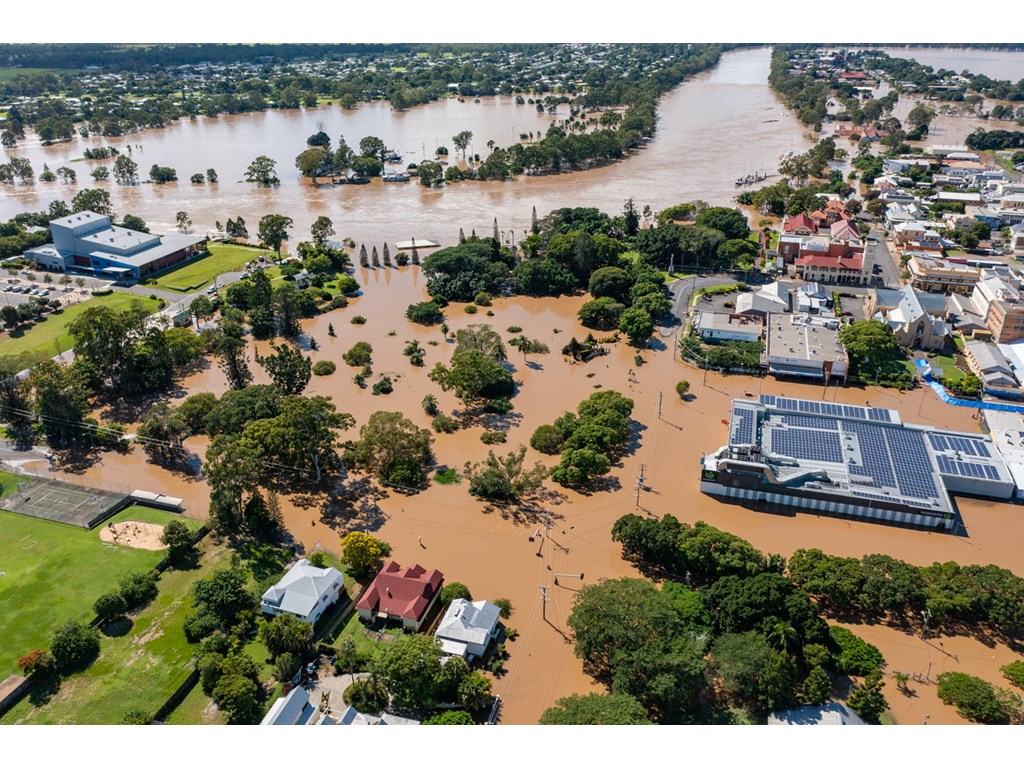
This time last year Queensland was experiencing one of the most significant natural disasters.
The state's recovery operations from the 2021-22 natural disaster season continue with an estimated reconstruction bill for the 2021-22 disaster season now exceeding $4.2 billion.
This amounts to one of the costliest recoveries in Queensland's history, in response to nine devastating disaster events that hit the Sunshine State between November 2021 and May 2022, impacting 66 of Queensland's 77 local government areas.
The largest of these was the 'rain bomb' over South East Queensland in late February, which saw the wettest six-day period in recorded history, while the Mary River in Gympie peaked at almost 23 metres, breaking records that had stood for a century.
Federal Minister for Emergency Management, Murray Watt, said the scale of damage from these disaster events was extraordinary, with homes, businesses and communities severely impacted – some of them multiple times.
"Among these nine disasters, southern regions experienced four consecutive widespread major floods, which caused a level of destruction not seen since the floods of 2011," Minister Watt said.
"Areas from Maryborough and Gympie, west to Goondiwindi and south to the Gold Coast, saw extremely heavy falls that broke multiple rainfall records.
"Local emergency service workers and volunteers were called on time and again to protect their communities – I thank them for all they continue to do.
"These events remain very raw for Queenslanders, especially those who lost loved ones, lost their homes, and lost their businesses. We know the effects of these floods will be felt for a long time and I would encourage anyone who is having a hard time to seek professional support."
Queensland Deputy Premier and Minister responsible for the Queensland Reconstruction Authority Steven Miles said the unprecedented weather event left its mark on South East Queensland.
"Queenslanders are a resilient bunch, but even the toughest of us were tested by the 2021-22 disaster season," he said.
"Together with the Commonwealth Government, we funded the biggest disaster support package in Queensland's history to not only respond to the immediate clean up and rebuild but to build back better and increase resilience in Queensland communities.
"Many parts of our community are still recovering. We will continue to work together to ensure Queenslanders are always supported, no matter what Mother Nature throws our way."
Through the jointly funded Commonwealth-State Disaster Recovery Funding Arrangements (DRFA), various programs and funding channels to assist flood-impacted communities and businesses have been established, including:
- The first-of-its-kind $741 million Resilient Homes Fund
- $174.7 million for human and social initiatives like mental health services and accommodation support
- $177 million for economic recovery, including loans for medium-to-large businesses, grants for rural landholders, and support for small businesses and tourism operators
- $180 million to rebuild, recover and strengthen community and recreational assets
- $59.9 million for environmental recovery, including $31 million for flood risk management
- $150 million Betterment Fund for councils and state agencies to improve the resilience of essential public infrastructure
- $30 million clean-up package for beaches, waterways and parks
- $24 million local recovery and resilience grants
The Commonwealth Government has supported over 416,000 individuals through over $527 million in disaster payments, and committed $75 million from the Emergency Response Fund for disaster mitigation and risk reduction work.
A further $35.8 million had also been provided in personal hardship assistance, benefitting more than 111,000 people.
This personal hardship assistance allowed impacted Queenslanders to purchase food, clothing or medical supplies, and also included $8 million in Structural Assistance Grants that have helped more than 980 people repair their homes.
More than $127 million has also been approved to date, over 7,800 grants and counting, for affected primary producers, small businesses and not-for-profits.
The $741 million Resilient Homes Fund has seen more than 5,800 registrations for house raising, resilient retrofitting or voluntary home buy-back. 207 flood-affected homeowners have accepted offers through the Voluntary Home Buy-Back Program, which will allow these people to move away from the threat of rising floodwaters for good.






